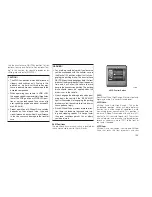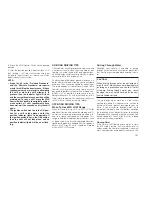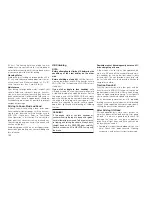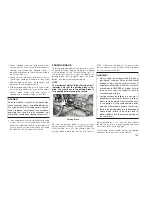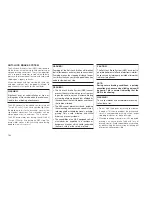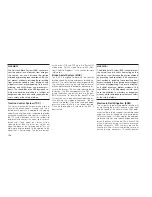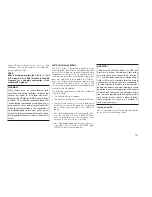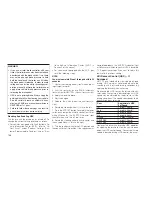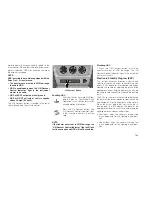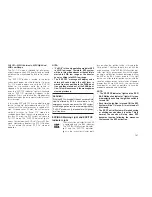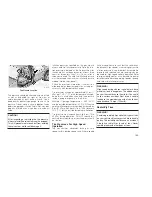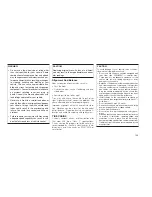
The pressure should be checked and adjusted,
as well as inspected for signs of tire wear or
visible damage, at least once a month. Use a
good quality pocket-type gauge to check tire
pressure. Do not make a visual judgement when
determining proper inflation. Radial tires may look
properly inflated even when they are underin-
flated.
CAUTION!
After inspecting or adjusting the tire pressure,
always reinstall the valve stem cap (if equipped).
This will prevent moisture and dirt from entering
the valve stem, which could damage it.
Inflation pressures specified on the placard are
always cold tire inflation pressure. Cold tire infla-
tion pressure is defined as the tire pressure after
the vehicle has not been driven for at least three
hours, or driven less than 1 mi (1.6 km) after a
three-hour period. The cold tire inflation pressure
must not exceed the maximum inflation pressure
molded into the tire sidewall.
Check tire pressures more often if subject to a
wide range of outdoor temperatures, as tire pres-
sures vary with temperature changes.
Tire pressures change by approximately 1 psi (7
kPa) per 12°F (7°C) of air temperature change.
Keep this in mind when checking tire pressure
inside a garage, especially in the winter.
Example: If garage temperature = 68°F (20°C)
and the outside temperature = 32°F (0°C) then the
cold tire inflation pressure should be increased by
3 psi (21 kPa), which equals 1 psi (7 kPa) for every
12°F (7°C) for this outside temperature condition.
Tire pressure may increase from 2 to 6 psi (13 to
40 kPa) during operation. DO NOT reduce this
normal pressure build-up, or your tire pressure will
be too low.
Tire Pressures For High Speed
Operation
The manufacturer advocates driving at safe
speeds within posted speed limits. Where speed
limits or conditions are such that the vehicle can
be driven at high speeds, maintaining correct tire
inflation pressure is very important. Increased tire
pressure and reduced vehicle loading may be
required for high-speed vehicle operation. Refer
to original equipment or an authorized tire dealer
for recommended safe operating speeds, loading
and cold tire inflation pressures.
WARNING!
High speed driving with your vehicle at or above
maximum load is dangerous. The added strain
on your tires could cause them to fail. You could
have a serious accident. Don’t drive a vehicle
loaded to the maximum capacity at continuous
speeds above 75 mph (120 km/h).
Radial-Ply Tires
WARNING!
Combining radial ply tires with other types of tires
on your vehicle will cause your vehicle to handle
poorly. The instability could cause an accident.
Always use radial tires in sets of four. Never
combine them with other types of tires.
Tire Placard Location
143
Summary of Contents for Cherokee 2009
Page 1: ......
Page 2: ......
Page 3: ......
Page 5: ...2...
Page 9: ...6...
Page 11: ...8...
Page 15: ......
Page 45: ...42...
Page 50: ...Rear Window Defroster If Equipped 89 ROOF LUGGAGE RACK IF EQUIPPED 90 47...
Page 51: ......
Page 63: ...60...
Page 64: ...61...
Page 65: ...62...
Page 97: ...INSTRUMENT CLUSTER 94...
Page 106: ...Compass Variance Map 103...
Page 111: ...Compass Variance Map 108...
Page 116: ......
Page 120: ...117...
Page 123: ...Control Setting Suggestions for Various Weather Conditions 120...
Page 147: ......
Page 159: ......
Page 162: ......
Page 175: ...172...
Page 179: ......
Page 210: ...9 IF YOU NEED CONSUMER ASSISTANCE IF YOU NEED ASSISTANCE 208 207...
Page 212: ...209...
Page 213: ...210...
Page 214: ...10 INDEX 211...

